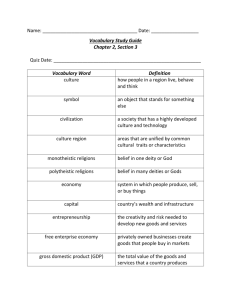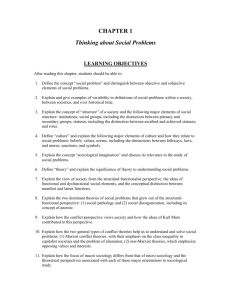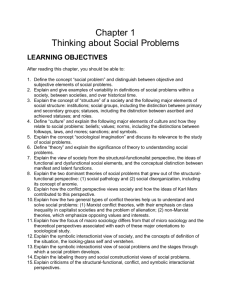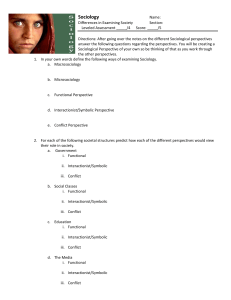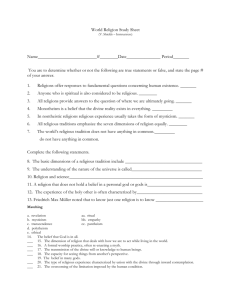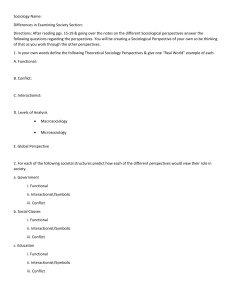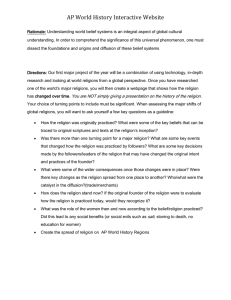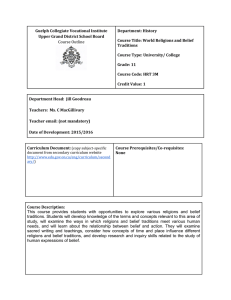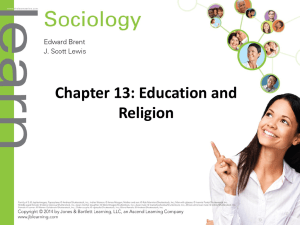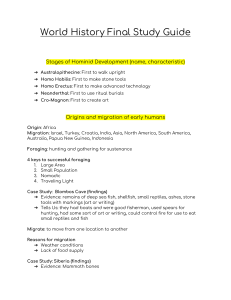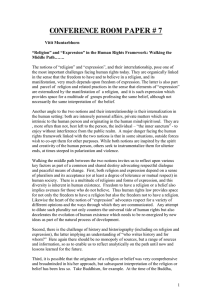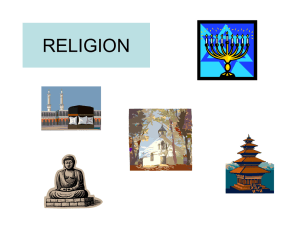Education and Religion
advertisement
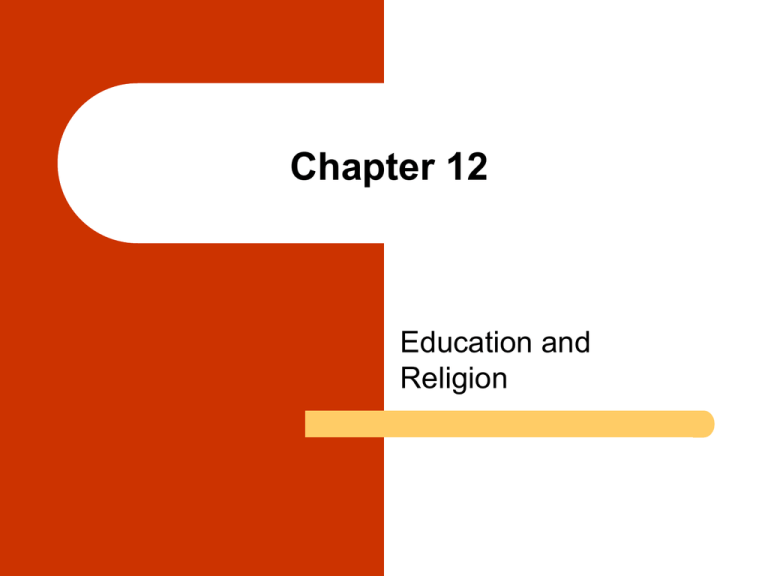
Chapter 12 Education and Religion Chapter Outline An Overview of Education and Religion Sociological Perspectives on Education Problems in Education Religion in Historical Perspective Sociological Perspectives on Religion Types of Religious Organization Trends in Religion in the United States Education and Religion in the Future Education and Religion Powerful forces in contemporary societies. Impart essential values, beliefs, and knowledge. Grapple with issues of societal stability and social change, reflecting society even as they attempt to shape it. Functions of Education Manifest functions Socialization Transmission of culture Social control Social placement Change and innovation Latent functions Production of social networks Restricting some activities Creation of generation gap Conflict Perspective Education is a vehicle for reproducing existing class relationships. Unequal funding is a source of inequality in education. Access to colleges and universities is determined not only by academic record but also by the ability to pay. Symbolic Interactionist Perspective Self-Fulfilling Prophecy- students perform according to the expectations of their teachers. Students labeled as gifted may achieve at a higher level because of the label. Some girls learn to attribute success to effort while boys learn to attribute success to intelligence and ability. Religion Seeks to answer important questions such as why we exist, why people suffer and die and what happens when we die. Comprised of beliefs, symbols and rituals. All known groups over the past 100,000 years have had some form of religion. Four Main Categories of Religion 1. Simple supernaturalism - belief that supernatural forces affect people's lives positively or negatively. 2. Animism - belief that plants, animals, and elements of the natural world are endowed with spirits that impact events in society. Four Main Categories of Religion 3. Theism - belief in a God or Gods. 4. Transcendent idealism - belief in sacred principles of thought and conduct, such as truth, justice, life and tolerance for others. Major World Religions Followers Founder Date Christianity 1.7 billion Jesus 1st century C.E. Islam 1 billion Muhammad ca. 600 C.E Hinduism 719 million No specific founder ca. 1500 B.C.E. Buddhism 309 million Siddhartha Gautama 500 to 600 B.C.E. Judaism 18 million Abraham, Isaac, Jacob ca. 2000 B.C.E. Confucianism 5.9 million K’ung Fu-Tzu 500 B.C.E. Functionalist Perspective Religion has 3 important functions: 1. Providing meaning and purpose to life. 2. Promoting social cohesion and a sense of belonging. 3. Providing social control and support for the government. Conflict Perspective According to Karl Marx, religion is the "opiate of the people." Max Weber argued that religion could be a catalyst to produce social change. Symbolic Interactionist Perspective Religion serves as a reference group to help people define themselves. Women’s versions of a certain religion usually differ from men’s versions. Characteristics of Churches and Sects Church Sect Organization Large, bureaucratic, led by a professional clergy Small, faithful group, high degree of lay participation Membership Open to all; members usually from upper and middle classes Closely guarded membership, usually from lower classes Worship Formal, orderly Informal, spontaneous Salvation Granted by God Achieved by moral purity Attitudes Toward Other Religions Tolerant Intolerant Trends in Religion in the U.S. The rise of a new fundamentalism has occurred at the same time as a number of mainline denominations have been losing membership. Some members of the political elite in Washington have vowed to bring religion "back" into schools and public life. Goals 2000: Educate America Act Passed by Congress in 1994 to challenge the nation’s public school system to meet specific goals by 2000. Very little progress has been made. The stated goals are overly idealistic. Goals 2000: Educate America Act Three key goals: Students leave grades 4, 8, and 12 with competency in English, math, science, history, and geography. U.S. students will lead in science and mathematics achievement. Every adult will be literate.
